Slow cooker corned beef and cabbage is the best way to make your corned beef for tender, delicious results every single time.
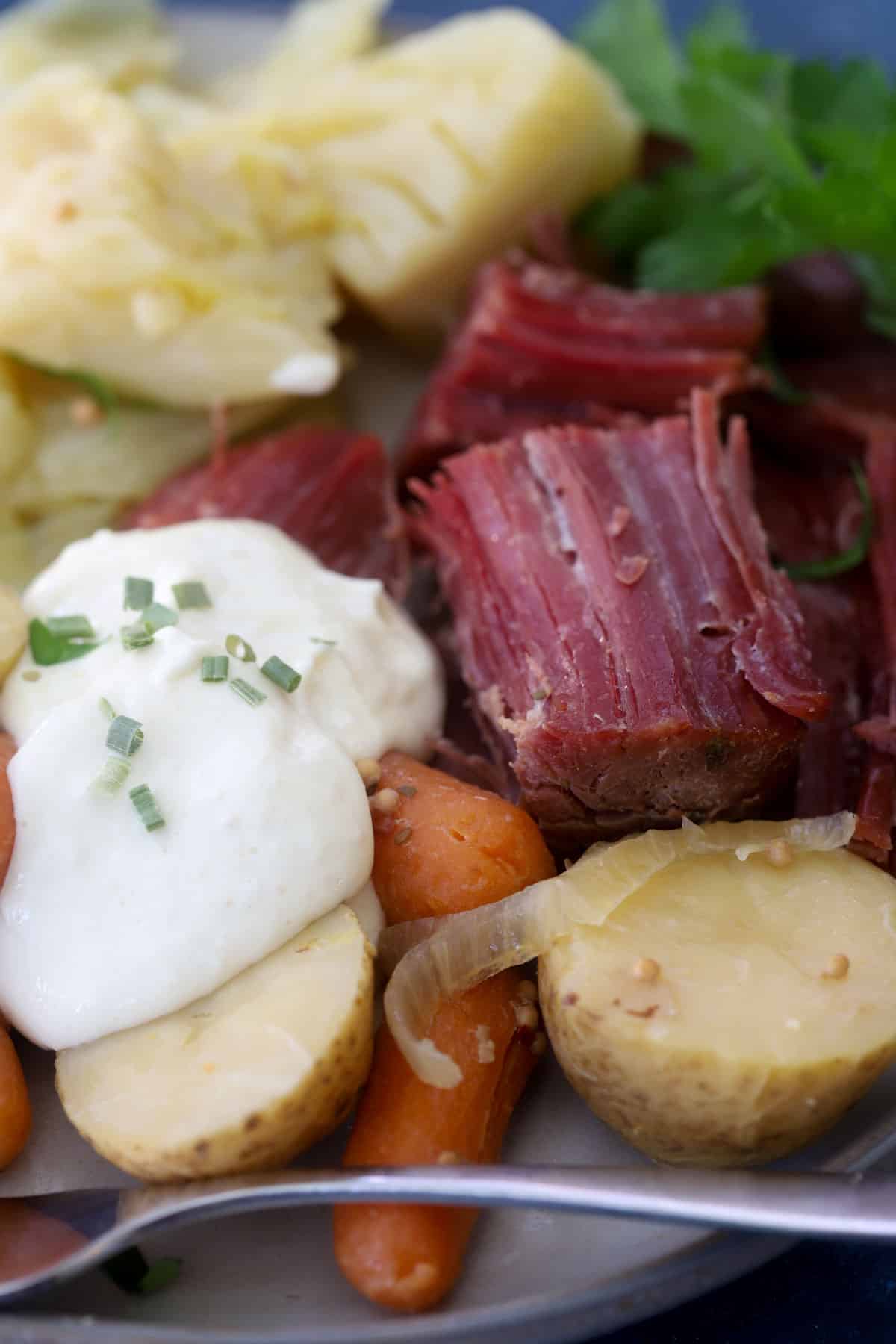
Last year, I did a 23 and me test only to find out what I already suspected after producing a fair-skinned, strawberry blonde, and blue-eyed child. My gene pool is over 90% Irish. My Aunt had always impressed on me our strong Irish heritage via genealogy, but for some reason, I didn't own it until I produced a child that fit the bill (despite my husband's Middle Eastern heritage, I thought would dominate the gene pool) and saw the heritage results from the test. Probably because I have light brown hair and brown eyes, I kind of thought I was the furthest thing from Irish there could be. Turns out those genes are in there, ready to pounce when they feel like, in this case, my middle child. Genetics are kind of crazy.
So anyway, I don't love a ton of Irish food, and actually, it took Mr. Hungry several years of making corned beef and cabbage for me to enjoy it. I mostly look forward to us making reubens with the leftovers, which is my all-time favorite sandwich. Since I've been making this for Mr. Hungry for several years, I thought I'd share how I make ours! I see so many recipes floating around, making it in the oven or other places, but in my opinion, the slow cooker is the easiest way to produce tender, delicious results every time. What wasn't easy was trying to shoot this recipe. Nowadays, with three kids under five, my life is chaotic AF. This recipe takes 10 hours total, which means getting it in the slow cooker in enough time to shoot it BEFORE the witching hour sets in and my kids turn from Jeckel to hide at 4 pm on the dot. I totally forgot to put the cabbage in the slow cooker two hours before shooting and had to cook it in the Instant Pot and add it in later. I also only got a few photos, and I'm lucky I got them.
But I'm sharing the photos I did get with you today because I've seen way too many recipes promoting oven cooking, and I just don't think that's the way to go. The slow cooker is best for this recipe, friends! Tough corned beef that you have to slave over is gross! Happy Saint Patrick's Day!
What is Corned Beef?
You may be familiar with the unique taste of corned beef, but not what it is. Typically, brisket undergoes a brining process, curing it with salt. Although technically, you could use another meat. The brining process was developed before there were other methods of preserving salt, as it is antimicrobial and tastes delicious. Since brisket is considered a Kosher cut, many Jewish delis or delis serving homemade corned beef on their Reubens often have briskets soaking in large bins of water and salt for 5-7 days in their walk-in freezers. After curing, spices similar to those used for pickling are used to bring out the flavor. While this dish does have Irish roots, it's not very popular in Ireland, and especially not for St. Patrick's Day. It became more of a tradition for St. Patrick's Day in the US thanks to Abraham Lincoln choosing it as his inaugural meal about two weeks before St. Patrick's Day. Sad, I know. I thought it was celebrated worldwide for St. Patrick's Day, but it turns out not. But, it does originally come from across the Atlantic, so I guess it works.
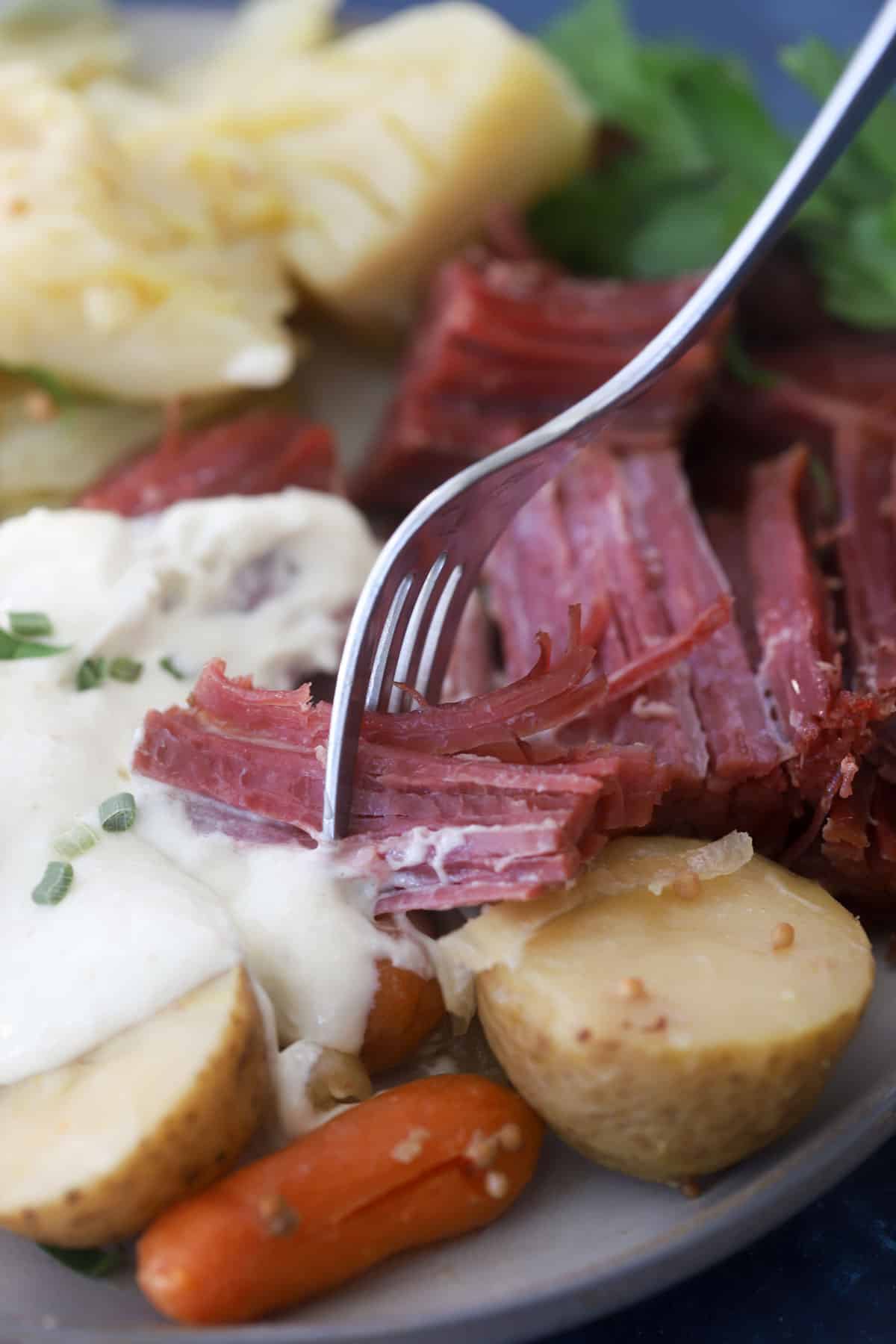
Is Corned Beef Healthy?
I've heard several people make the comment, "It's not good for you, but it's once a year," when they talk about corned beef. And as a dietitian, I had to pause. How big of a deal is corned beef? I never gave it a second thought. It's meat soaked in salt and flavored with pickling spices. I believe in a well-rounded, varied diet. In my house, I try to get in beef, chicken/turkey, pork, and seafood at least once a week every week, seafood twice if possible. Variation in your diet creates the most nutrient-dense diet. If I nitpick corned beef, I would say that brisket is a fattier cut of meat, so it's going to be higher in calories and saturated fat than, say, a roast or steak. But it's still beef, so it's going to have important nutrients like iron, zinc, B- vitamins, and protein. The curing process makes it high in sodium, so I put it in the same lines as lunch meat, sausages, hot dogs, and bacon (aka processed meats.)
In my opinion, the science that demonizes red meat as a carcinogen is not strong. But again, everything in moderation friends. I wouldn't be so bold as to go try the carnivore diet. Remember, I said we vary our diet, so I don't think twice about red meat being in the diet 1-2 times a week. But I don't worry about serving bacon once a week or eating some deli meat because we also try to get 4-5 cups of vegetables a day. One of the biggest concerns about bias in the research of meat eaters vs. vegetarians is that vegetarians often eat more produce. What if a meat eater eats the same amount of produce as a vegetarian, then what? We've never seen a study that controls the amount of produce eaten between the two groups. It only makes correlations between servings of meat per week and cancer risk. But, people who eat more red meat and processed foods also tend to smoke, weigh more, and eat less vegetables. So, I encourage you not to overthink this if you are consuming a well-varied diet and getting at least 5 cups of nonstarchy veggies daily + fruit + beans/other plant foods, which most people aren't. So start with getting enough vegetables before you demonize your holiday food. That's my thoughts on the matter!
In this recipe for slow cooker corned beef and cabbage, we are including nutrient-rich carrots, potatoes, and cabbage. Your serving of veggies (carrots and cabbage) should be about half your plate, and the potatoes and corned beef should be split on the other side of the plate (about ¼ each). That's a balanced meal with plenty of plant food to provide antioxidants, fiber, and nutrients to your meal!
How to Make Slow Cooker Corned Beef and Cabbage
This recipe is so easy to make. (It's not as easy to photograph if you want to photograph in natural light, but it's easy to make.) Just make sure you start it 10 hours before you want to eat it. There is no high or low option when it comes to corned beef/beef brisket. You should cook it on low ONLY. So, if you have small kids and eat super early like I do, then you'll need to plan accordingly that morning.
Personally, I have no desire to make corned beef from scratch, so this isn't the website if you need info on that. I like to buy it with the seasoning packet already in it so the meat has been marinating in the spices for a decent amount of time. I start by adding onions to the bottom of the slow cooker, placing the meat on top, then adding water until the meat is almost covered.

After 3-4 hours of cooking on low, I add a bag of baby carrots and small potatoes. I did chop my potatoes in half this time, but a lot of times, I don't even do that. Just throw it in there.
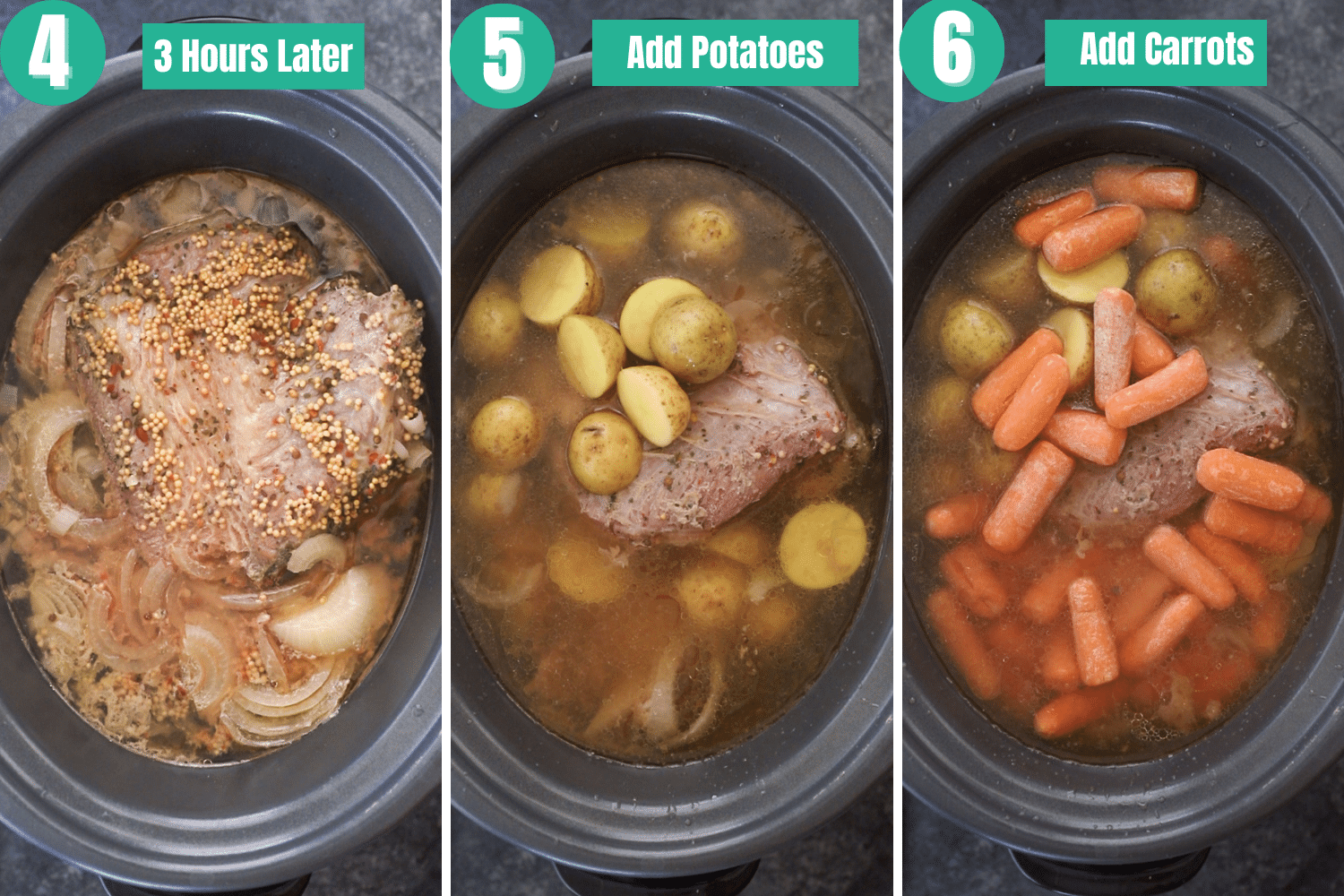
Usually, at the 8-hour of cooking mark, so about 2 hours before serving I chop up a head of cabbage and toss it in. Personally, I like to cut my cabbage into 16 pieces, so each half of the cabbage is cut into eight pieces. You may have to drain some water/broth to fit the cabbage.
But in the chaos of life I forgot to do that this time around and ended up having to cook my cabbage in the instant pot and then add it to the finished brisket with potatoes and carrots. So, that's why there are no process photos of that. Maybe next year, I can add them in.
Ingredient Swaps and Substitutions
This recipe is gluten-free, but read below if you need to swap out any ingredients.
- Onion - An onion adds flavor but is unnecessary to the final meal.
- Brisket - I've seen recipes online that use steak to make it "healthier," but if you're lazy like me and don't want to make your corned beef from scratch, you're buying it from the store, and that's usually brisket.
- Water - I would use water. Or, if you want, you can use salt-free beef broth. But since brisket is already really salty from the curing process, you don't want to add more salt using regular broth.
- Carrots - Feel free to omit or substitute.
- Potatoes - If you want to make this low-carb, skip the potatoes! You could also swap out the type of potato for whatever you want. It's the preference here. I like to use the little potatoes that are pre-washed/ready to cook because I'm a lazy cook.
- Cabbage - Obviously, it won't be corned beef and cabbage without the cabbage, but you could omit it if necessary.
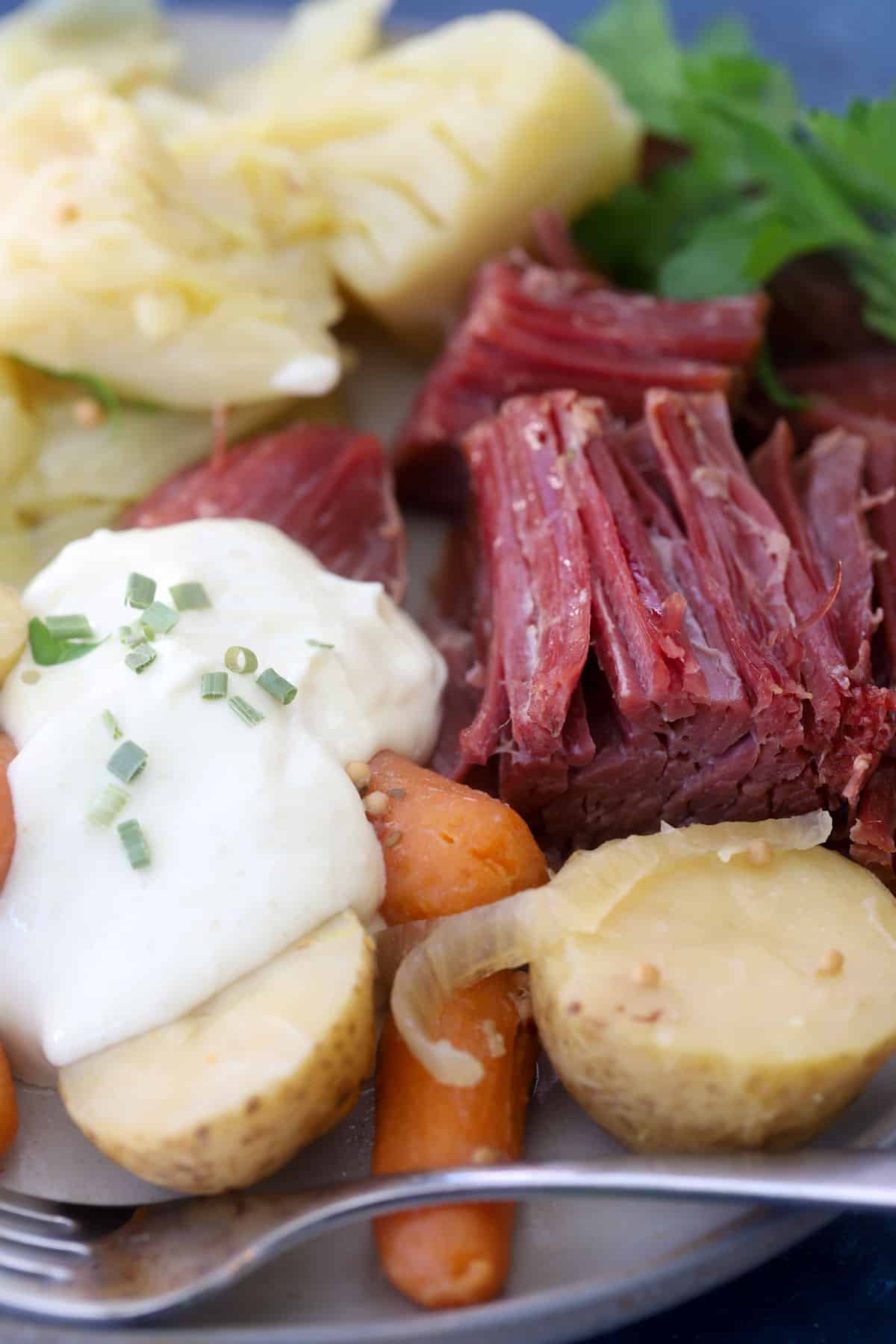
How to Store and Freeze Corned Beef and Cabbage
To store corned beef and cabbage: Store corned beef and cabbage in the refrigerator for up to five days after cooking. Reheat in the microwave.
To freeze corned beef and cabbage: You can freeze corned beef and cabbage after cooking. However, I don't think the texture will be that great when you defrost it. Your veggies and beef will be very tender when they are done cooking. Freezing and then defrosting will make everything pretty mushy. The beef would be okay to freeze on its own, but not the veggies.
Slow Cooker Corned Beef and Cabbage
Equipment
- Knife
- Strainer Spoon helpful but not required
Ingredients
- 1 yellow onion
- 3-4 lbs Corned Beef Brisket
- 5-6 cups water
- 1 lb baby carrots
- 1 lb baby potatoes
- 1 cabbage head
Horseradish Mayo
- 1 tablespoon horseradish
- ½ cup mayo
Instructions
- Slice onions and place on the bottom of the slow cooker. Add corned beef brisket on top. Add enough water almost to cover the brisket. Cook on low for 10 hours.
- 3-4 hours into cooking, add the potatoes and carrots. Flip over brisket at this time as well.
- Eight hours into cooking (2 hours before finishing), add the cabbage cut into 8-12 pieces. You may need to scoop out some water to get it to fit.
- Make sauce for the meal by combining the horseradish and mayo and serve. It's done when it easily shreds apart with a fork and reaches an internal temperature of 155F. (It will likely be much hotter than that, though, when it's done.)
Video
Notes
Nutrition
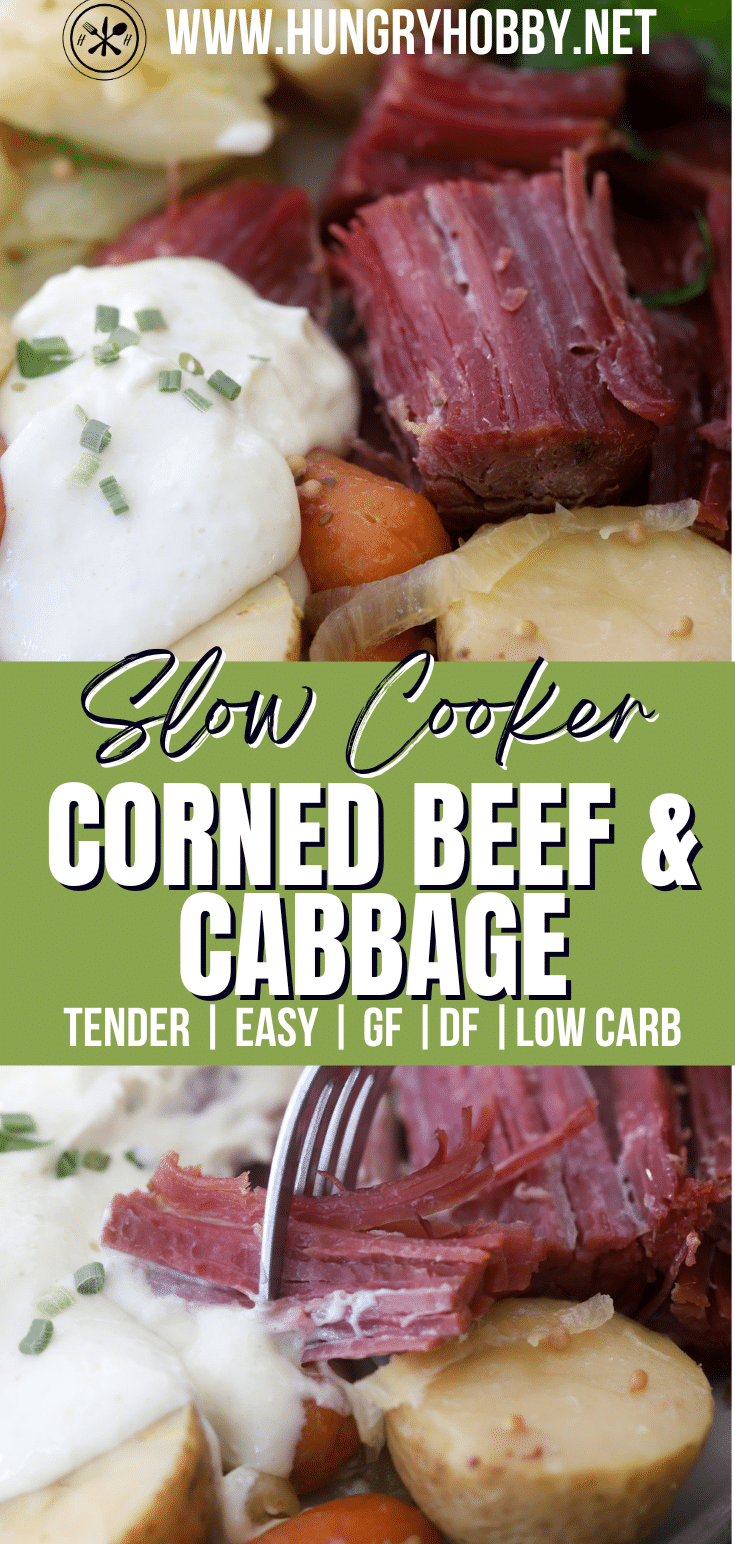



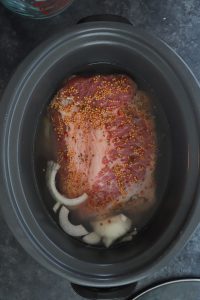
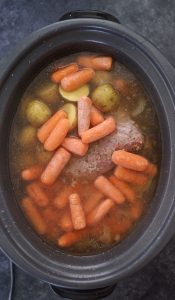




Leave a Reply